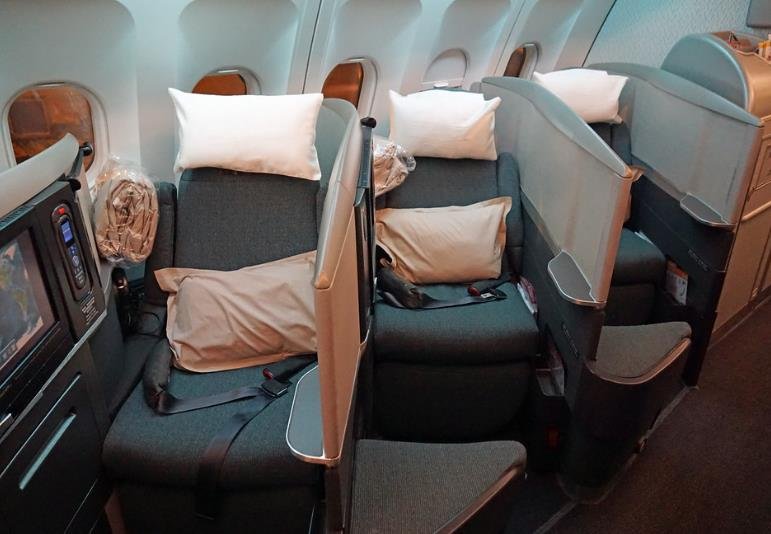Air travel is undergoing a significant transformation as major airlines bid farewell to traditional first-class cabins. Instead, they’re introducing ultra-luxury business class options that promise premium experiences without the hefty price tags. This shift reflects changing passenger demands and the industry’s pursuit of maximizing revenue.
Shifting Skies: Why First Class is Fading
The luxury travel market is evolving, and first class is no longer the pinnacle of in-flight comfort. Airlines are reallocating resources to enhance business class, catering to a broader range of affluent travelers.
Oman Air is the latest to follow suit, replacing its first-class cabins with the innovative Business Studio. This move aligns with industry trends where airlines aim to offer superior services at more accessible prices.
- Enhanced seat pitch and privacy
- State-of-the-art in-flight entertainment
- À la carte dining options

Oman Air Joins the Elite Club of Ultra-Luxury Business
Oman Air’s new Business Studio is set to redefine the business class experience. Featured primarily on its London and Bangkok routes, these cabins offer a blend of comfort and exclusivity that rivals traditional first class.
Con Korfiatis, CEO of Oman Air, highlighted the declining demand for first-class travel. “Our Business Studio provides an 82-inch seat pitch, privacy walls, a 23-inch personal screen, free Wi-Fi, and à la carte dining,” he explained to Fortune. This comprehensive package ensures passengers enjoy a luxurious journey without the exorbitant costs associated with first class.
| Feature | Business Studio | Traditional First Class |
|---|---|---|
| Seat Pitch | 82 inches | 90 inches |
| Personal Screen | 23 inches | 30 inches |
| Wi-Fi Connectivity | Free | Complimentary |
| Dining Options | À la carte | Multi-course meals |
| Price Point | Premium Business Rate | Upwards of $6,000 |
Industry-Wide Shift: More Airlines Dropping First Class
Oman Air isn’t alone in this transition. Several other airlines have either phased out first class or are planning to do so in the near future. This strategic move is driven by the desire to streamline cabin offerings and cater to a wider market segment.
American Airlines, Air New Zealand, and Turkish Airlines have all recently announced the removal of their first-class cabins. Instead, they are enhancing their business class services to provide a more versatile and profitable option for passengers.
Passengers now have access to:
- Larger, more comfortable seats
- Increased privacy with suite-like designs
- Enhanced in-flight entertainment systems
These upgrades not only improve the passenger experience but also optimize the use of cabin space, allowing airlines to accommodate more travelers and increase revenue.
The Financial Logic Behind the Move
From a financial perspective, maintaining multiple classes can be costly and inefficient. By focusing on ultra-luxury business class, airlines can reduce operational expenses while still offering premium services that attract high-paying customers.
Business class cabins are easier to manage with standardized services and staffing. Additionally, the higher occupancy rates in business class compared to first class lead to better revenue management. Passengers are willing to pay extra for added comfort and amenities, making it a lucrative option for airlines.
“Passengers are primarily paying for extra space and enhanced services rather than an entirely separate cabin experience,” observes aviation analyst Maria Lopez. This approach allows airlines to offer top-tier services without the complexity and costs associated with maintaining a distinct first-class section.








